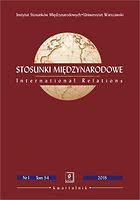
Bridging Europe’s Innovation Divide: How European Union Research Policy Drives Growth in Less Developed Regions
Background
This research examines the impact of competitive European research and development funding—specifically from the European Union’s Seventh Framework Programme and Horizon 2020—on regional economic growth, research capacities, and innovation performance across NUTS2 regions, representing mid-level administrative divisions within European Union Member States. Given the persistent disparities in research and innovation output between more and less developed regions, we focus on how these funding mechanisms influence economic and scientific development, particularly in less developed and peripheral regions. While European Union research programs aim to foster knowledge production and technological advancement, their role in mitigating regional inequalities and supporting economic convergence remains an open question.
Methods
To assess the effects of European Union Research and Development (EU R&D) funding, we conduct a quantitative analysis using data from Eurostat, PATSTAT, Web of Science, and the European Commission’s CORDIS database. We measure changes in three key indicators —publication output, patent applications, and GDP per capita— between 2011 and 2022. GDP per capita, representing a region’s total economic output divided by its population, is a key indicator of regional economic performance. Ordinary least squares regression models are employed to evaluate the relationship between funding intensity and regional research and economic
Results
Our findings reveal significant and persistent interregional disparities in research and innovation outcomes. While participation in European Union’s Seventh Framework Programme and Horizon 2020 is associated with stronger research capacities in already well-developed regions, no significant relationship is found between EU-funded R&D and increases in publications or patents at an aggregate level. However, a positive correlation emerges between EU R&D funding and GDP growth in less developed regions, suggesting that while direct scientific outputs may not always materialize, economic benefits arise through alternative channels such as small and medium-sized enterprise (SME) engagement, infrastructure improvements, and knowledge diffusion.
Conclusions
The study highlights the broader implications of transnational funding frameworks for regional economic convergence within the EU. Despite limited effects on immediate research outputs in less developed regions, competitive EU R&D programs contribute to economic resilience in lagging regions, raising important considerations for multi-level governance and international cooperation. These results align with debates in International Relations regarding the role of supra-national institutions in shaping equitable economic outcomes and addressing structural imbalances across Member States. As EU funding strategies evolve, a more integrated approach that strengthens innovation ecosystems in underperforming regions could enhance European research policy's inclusivity and long-term impact.




